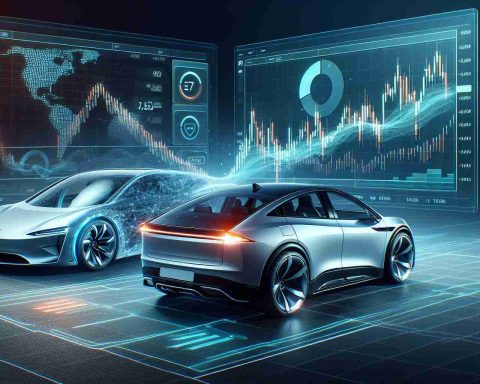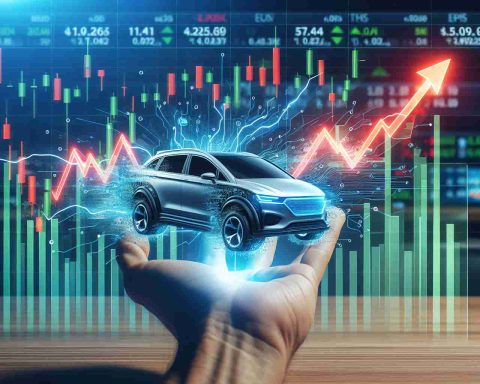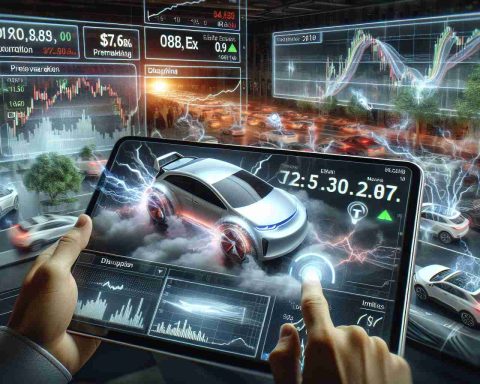As India prepares for its 2025 Union Budget, the spotlight is on the burgeoning electric vehicle (EV) industry. Stakeholders are urging the government to enhance support for critical areas such as charging infrastructure and incentives for local manufacturing.
The call for action comes amid pressing challenges, particularly the scarcity of charging stations, which hinders EV adoption in smaller cities. Industry leaders have strongly advocated for targeted investments to create a comprehensive and efficient charging network throughout the nation.
The Finance Minister, Nirmala Sitharaman, previously indicated the government’s dedication to enhancing charging facilities in her 2024 budget speech. She emphasized a commitment to strengthen the electric vehicle ecosystem as India moves towards its ambitious net-zero emissions goal by 2070.
Within the existing Production Linked Incentive (PLI) scheme for the EV sector, significant opportunities are identified for growth. However, many players suggest extending benefits to include innovative battery technologies and localized component manufacturing. A Bengaluru-based manufacturer noted that broader PLI coverage could enhance global competitiveness.
On the funding front, the recently approved PM E-Drive Scheme promises substantial subsidies to encourage EV adoption, particularly for two and three-wheelers. In addition, the industry is lobbying for a reduction in the Goods and Services Tax (GST) on EV batteries, which could further alleviate costs.
With innovation and strong government support, India’s EV sector could transform its landscape, leading the charge towards a sustainable future.
The Future of Electric Vehicles: Impacts Beyond the Road
As India gears up for its 2025 Union Budget, the unfolding electric vehicle (EV) revolution signals more than just a shift in transportation; it offers profound implications for society, culture, and the global economy. The push towards EV adoption is reshaping urban landscapes, fostering a wave of innovation while challenging traditional automotive paradigms. With a burgeoning middle class, more Indians are expected to embrace sustainable transport, compelling manufacturers to adapt rapidly to changing consumer preferences.
This shift also carries significant environmental implications. A robust EV infrastructure could reduce greenhouse gas emissions, contributing to global climate goals. India’s commitment to achieving net-zero emissions by 2070 hinges on these advancements. By investing in clean energy technologies, the government not only combats urban pollution but also positions itself as a global leader in the green economy, attracting foreign investment and enhancing its global standing.
In terms of long-term significance, the rise of the EV industry could redefine job markets and skill requirements. As traditional manufacturing jobs decline, there will be an increasing demand for technical expertise in battery production and software development. Moreover, the cultural perception of mobility is expected to shift, integrating a lifestyle that prioritizes sustainability and efficiency. As India navigates this transition, it stands at the forefront of a global movement toward cleaner transportation, showcasing the economic potential and cultural evolution embedded in this transformative journey.
India’s Electric Vehicle Sector: Road to 2025 Union Budget and Beyond
The State of Electric Vehicles in India
As India gears up for its 2025 Union Budget, the electric vehicle (EV) industry is under a magnifying glass, attracting attention from stakeholders who stress the urgent need for augmented government support. This comes in the wake of escalating challenges, particularly the ongoing scarcity of charging infrastructure, which presents a major barrier to EV adoption, especially in smaller cities.
Charging Infrastructure Challenges
The lack of sufficient charging stations is a significant hurdle affecting the widespread acceptance of electric vehicles. Industry leaders are advocating for substantial investments aimed at developing a robust and comprehensive charging network across the nation. To meet the projected growth of the EV sector, it is imperative that the government prioritizes initiatives that enhance charging accessibility and infrastructure.
Government Commitment and Future Directions
Finance Minister Nirmala Sitharaman previously expressed the government’s resolve to bolster charging facilities in her 2024 budget speech. She highlighted the commitment to foster an electric vehicle ecosystem that aligns with India’s ambitious aim of achieving net-zero emissions by 2070. This objective necessitates strategic planning and execution in terms of policy formulation and financial investment.
Growth Opportunities in the PLI Scheme
The existing Production Linked Incentive (PLI) scheme for the EV sector has been acknowledged as a significant opportunity for growth. However, industry voices suggest that the benefits of this scheme should be expanded to accommodate innovative battery technologies and to promote localized component manufacturing. A local manufacturer from Bengaluru stated that a broader scope of PLI coverage could greatly enhance India’s competitiveness in the global market.
Financial Incentives and Subsidies
The recently approved PM E-Drive Scheme stands out as a pivotal initiative that promises considerable subsidies aimed at stimulating the adoption of electric vehicles, specifically targeting the two and three-wheeler segments. In addition to these initiatives, the industry is actively lobbying for a reduction in the Goods and Services Tax (GST) on EV batteries to lower costs further and encourage consumer adoption.
Pros and Cons of India’s EV Strategy
Pros:
– Government Support: Growing commitment from the government to enhance infrastructure and support for EVs.
– Subsidies and Incentives: Financial incentives through the PM E-Drive Scheme and potential GST reductions encourage adoption.
– Innovation Opportunities: Expansion of the PLI scheme to foster local manufacturing and cutting-edge battery technologies.
Cons:
– Charging Infrastructure Gaps: Existing scarcity of charging stations particularly affects rural and semi-urban areas.
– High Initial Costs: EVs and their components can still be expensive despite subsidies, deterring potential buyers.
– Dependency on Imports: Current reliance on imported components for EV manufacturing can affect scalability and profitability.
Looking Ahead: Predictions and Insights
With the right innovations and steadfast government support, India’s electric vehicle sector holds the potential to revolutionize the transportation landscape, driving towards a more sustainable and eco-friendly future. By addressing the critical limitations currently faced, such as charging infrastructure and taxation policies, India can position itself as a leader in the global EV market.
For more insights on India’s electric vehicle initiatives and policies, visit the official government website link name.
In summary, the intertwining of government efforts, industry innovation, and public engagement is essential for nurturing the growth of the electric vehicle sector in India. As the country approaches its 2025 Union Budget, stakeholders from various sectors must unite to champion the transition to electric mobility, unlocking a greener future for all.













